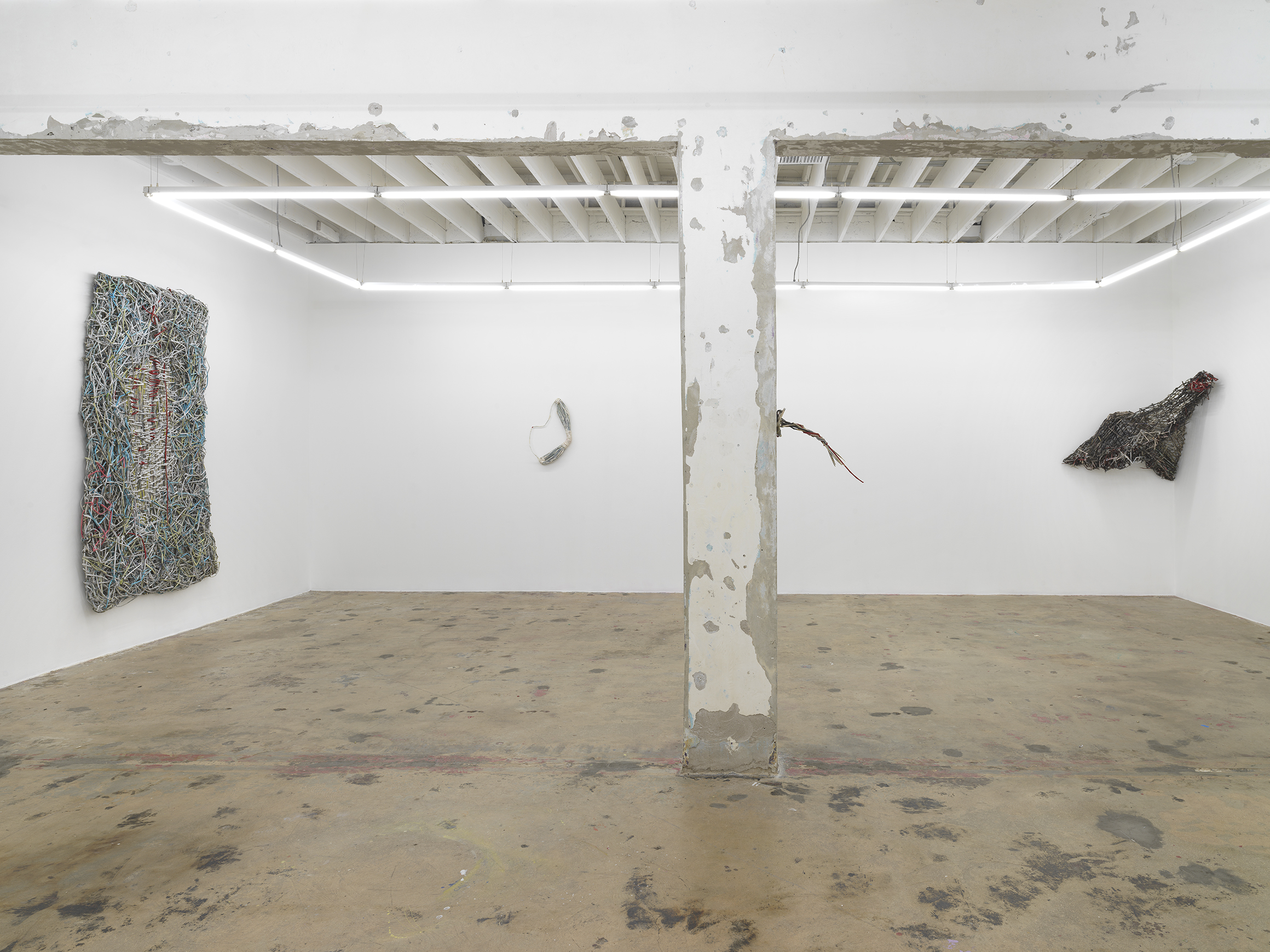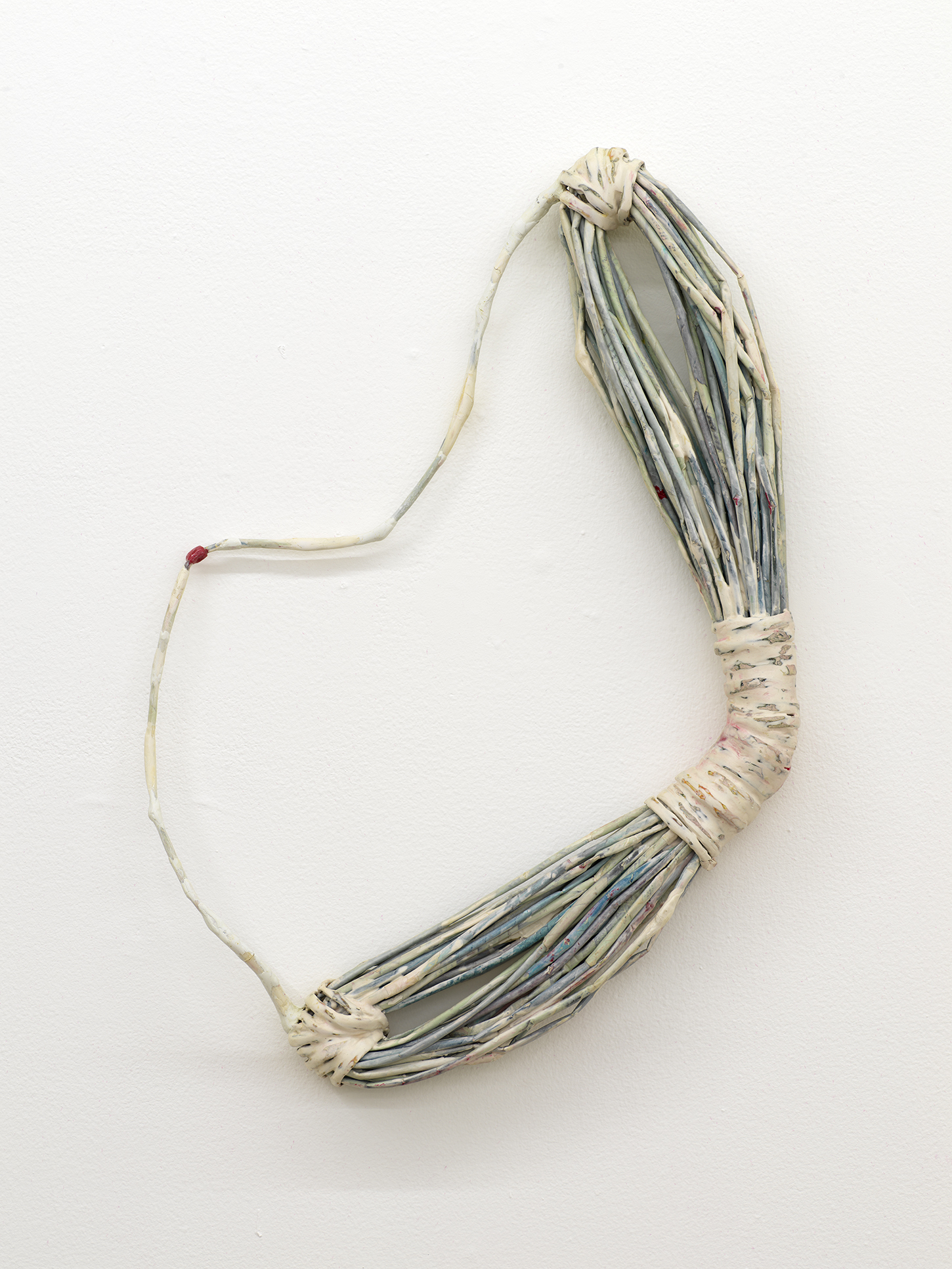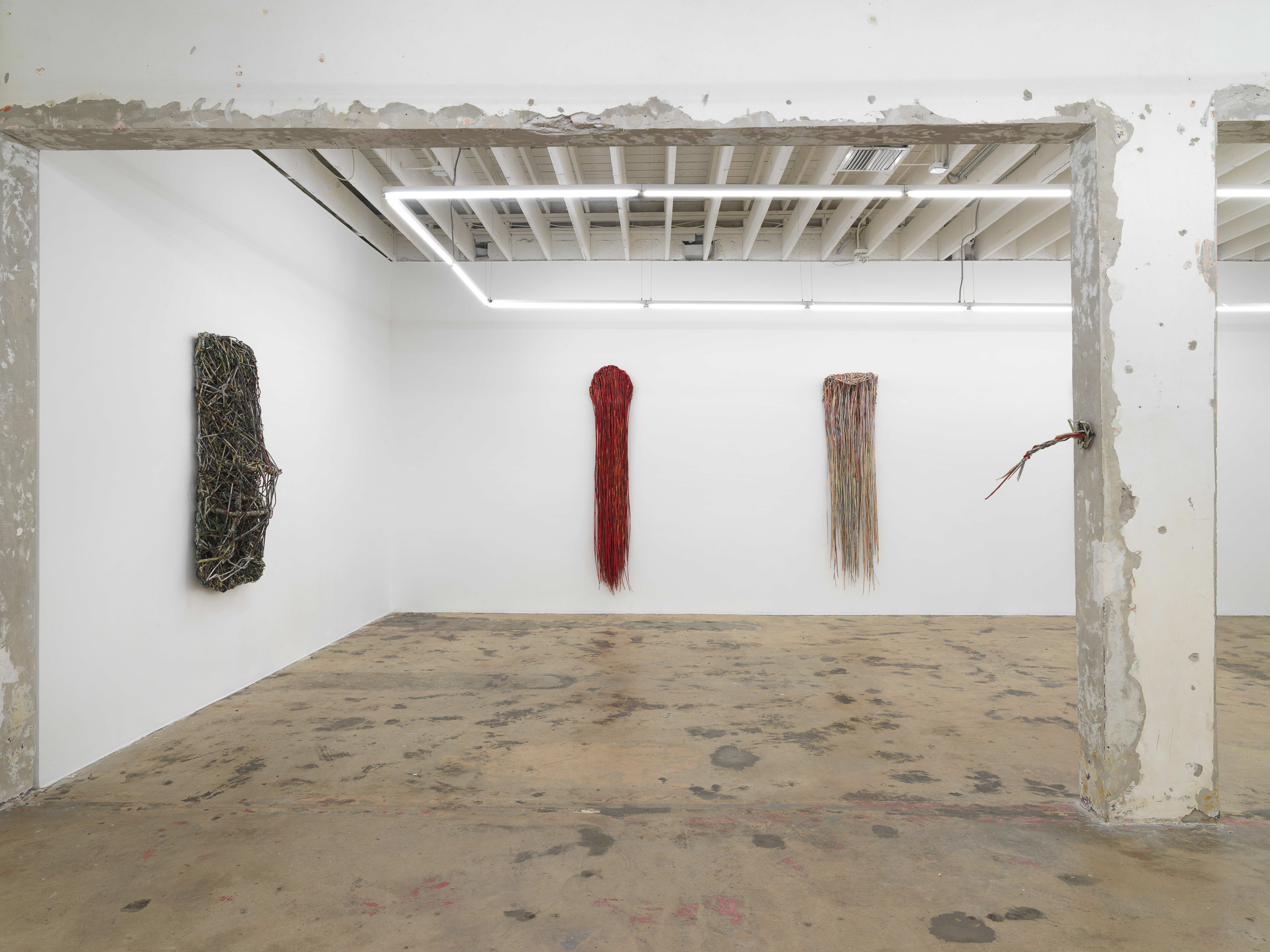Savannah Knoop Sculpts the News for Nina Johnson Show

On view at Nina Johnson Gallery through October 9, Savannah Knoop’s Earthling is an exploration of time shaped by pandemic anxieties.
By Lee Relvas
The first thing you should know is that Savannah Knoop’s show “Earthling” is on view at Nina Johnson gallery in Miami until October 9 and you don’t want to miss it. The second thing is that Savannah Knoop and I are in love. The third thing is that we’re two artists who hardly ever agree on art. The first time we went to a museum together the only work of art we both liked was a small painting by Monet. Of course, that’s the punchline version of reality, and over the past seven years, we’ve changed too: I can now say with certainty that not only do we both like Monet, we’re also both fans of Clifford Owens, Philip Guston and Howardena Pindell. That’s what umpteen hours spent talking to each other about art and other things will do: opinions cyclically thaw and freeze into new propositions; positions bend in one joint and flex in another; theses smudge and get overwritten.
Considering the ever-growing size and depth of this palimpsest, perhaps what’s even weirder are the persistent stretches of the self that remain intact and untouched, despite constant contact with the intimate human in my life. That’s where all the questions for this interview came from. ‘Color,’ I’d huff to myself, ‘how—and why!—does Savvy do that? That’s not what I’d do!’ Or, about process, ‘But how does Savvy work that way and actually get anything done?’ These were burning questions for me, and I’m glad I finally got to ask them. But my interior monologue isn’t just fussy indignation. Here is the most important thing to know: when I walked into Savannah’s studio a few months ago and saw the sculpture Overgrown Small Chair for the first time, my first thought was, ‘Daaaaamn, that’s beautiful.’ That separate part of me? It contains massive, drifting clouds of awe. The work in “Earthling” is calling out to be tangled with. If you accept its invitation, you might find yourself changed too.
Lee Relvas: Nobody’s got a color palette like you! Where does it come from?
Savannah Knoop: I get a lot of inspiration from colors that imply a sort of movement—for example, the laundry! There are so many colors you wouldn’t get unless you’d washed a garment for years. Or, when I was teaching at Judson Memorial Church a few summers ago, there was a closet with all of these miniature marks where wheels had skidded over the worn old linoleum on the floor. I love that kind of color quality too.
LR: The colors of heavy usage.
SK: Yes. Plus, I’ve always been a big biker but especially over the pandemic; riding my bike back and forth to the studio, color looks really different when you’re moving. The blur creates the color, which is different from the stationary color. And when you’re on your bike, you’re looking just a little ways ahead of you, never straight down, just far enough to see what’s coming.
Since the resin interacts with the newspaper, it’s also about embracing the chance of color. It sometimes feels like dying fabric because there’s so much variation on every newspaper page already. Different fonts, sizes, the weather looks different from the obituaries—they still print the television listings and classifieds! I cut each page into strips and roll them into these tubes; they look like conductors’ batons, with this thin repeating line wrapping around them. Then I dip them into aqua-resin—to embalm them—and even before you add pigment the resin has a translucency that’s almost like a film, sediment on the surface of the ocean.
LR: And when you do add pigment, it’s never entirely opaque, right? You can always see the text or image underneath?
SK: Almost always. The opaque colors never happen by chance, opaque is committed. I especially love the color palette that starts opaque and transforms into the gloaming grey, purple, blue washes when you can’t really tell whether the light is taking over the shadow or vice versa. Then there’s green, which has a bright, fresh, living energy, but when you follow that color through every stage—
LR: To mold, decay, to putrefaction—
SK: Exactly—the color palette is determined most strongly by thinking through all the stages of life in each color I’m using. Except for red. I’m intentionally not veering into every stage of red, no maroon. The red is always bright.
LR: It’s always fresh blood!
SK: Right! I think of that shade as The Red Shoes hue—the brightness does signal violence, but just as strongly it signals absolute vibrancy—pure life force.
LR: What’s the origin story for this series of sculptures?
SK: I started in late October 2019 during a residency with this tight formal equation; I’d roll the news every day and it would be a daily practice thing. I was thinking about artists like On Kawara and making more structure in my life. So I invented this metronome of activity. I did that for maybe about a week and then, of course, I fell behind and the newspapers piled up and piled up because I realized I hate habits like that. The news became this tidal wave of information I had to face. The body of work became more true to my life’s actual rhythms, more honest. It was a source of anxiety rather than a structured practice.
LR: And in the strange timescape of lockdown, the familiarity of your anxiety was maybe much more soothing.
SK: Yes! I had already set up a place to put it! Processing weeks of newspapers at a time, you start to push through, there’s no way forward but forward, you just have to do it, and that feels very realistic.
LR: Other people are always part of your process. Often they’re strangers, acquaintances, wild cards. This is maybe less obvious in your sculptures than in your performances, but nevertheless essential to the way you work and exist in the world. For example, when you were working against the clock to finish the sculptures for your Brown University show, you suddenly stopped everything, wrote a short film in two days and gathered together a cast and crew of 10 people to shoot it in two more days.
And for this show at Nina Johnson, you’ve had a lovely person working in the studio with you, Nima Jeizan, who is a wonderful artist in his own right. And the two of you would chat about waxing each other’s buttholes, or commune with Meredith Monk recordings, or hunker down with the BBC Newshour and discuss The Big Issues. There was that time when there was a big rainstorm, and Nima’s boyfriend Eric came over with a bottle of rum to make Dark N Stormies. When you’d tell me about these little details from studio life, I remember thinking, ‘It’s like a special occasion!’ Which it is!
SK: Yes! I have a deep practice of being with strangers and acquaintances through wrestling, through jiu jitsu, and it’s a really intimate exchange. You get to know them very well but you often don’t talk at all; it’s not through words. I’m addicted to that, and I love New York for that—you have basic, very bold and direct interactions with people all the time; it just happens as part of the density of the city. When Covid hit, the random stranger was suddenly someone you didn’t necessarily want to talk to, or even be nearby.
When I’m in my studio alone, these newspapers end up being metaphorical placeholders for the way that relationships in the world are so entangled and causal, and happening on different planes. Obviously, the news is a type of communal record. My short film, The Tumbler, depicts a brief encounter between two pairs of strangers, and feels like just a different tool to explore the ambiguity of living inside that human tangle. It was also the only excuse I could cook up to have a bunch of random strangers get their Covid tests and come together to make something!
LR: In this show I see two broad categories of form. There are the ones that could be reflecting through metaphor something that’s happening in the outer landscape, like the overgrown chair and the bow. Then there are the ones that seem to have invented themselves like the big one titled Notebook (June/July/August/September 2020), or the three long-hair ones titled Curve. Were the construction processes very different?
SK: With the three Curves, there was the longest gap between the period of time that the newspapers were reporting on—March, April and May 2020—and the period of time these pieces were actually created in: one year later. So the shape is about things coming down the pipeline, seismic shifts, a big slalom going down, down, down! The narrative shapes you create are so different once you know what happened. But more often the material was just building its own logic: can this support its own weight? It’s exactly like the logic of the chair itself; it is like a body.
LR: Without humans, without bi-peds, there’d be no chairs.
SK: Right. There is this chair in the backyard of my studio, and I love observing the logic of the weeds as they wrap around it every year. In the same way, the logic of the newspaper batons started to invent itself; a material that no longer was used for its original use but that played with mimicking other materials and processes of our world.
The material felt like it regressed into a natural fiber, back into our earliest technologies, like basket weaving, or rug making, or net tying. Those art forms were so functional and the process did contain space for people to be together and tell stories. Storytelling is a way of compressing time, but in a newspaper, the raw event that becomes a story in the paper is an especially taut form, a strict format.
That’s why I also wanted to introduce a different kind of time into these pieces. Not just the binary under/over of weaving, but the time of improvisation. It’s like dance: can a body do this? Can a body do that? There’s something about a laborious process like this… At least I can say I used every last drop of time available to me! But it doesn’t feel like I’m being too stingy with my time either. Time becomes breezy and free. Time stretches, tangles, finds tension—and those are the dances I always hope to find in life!


